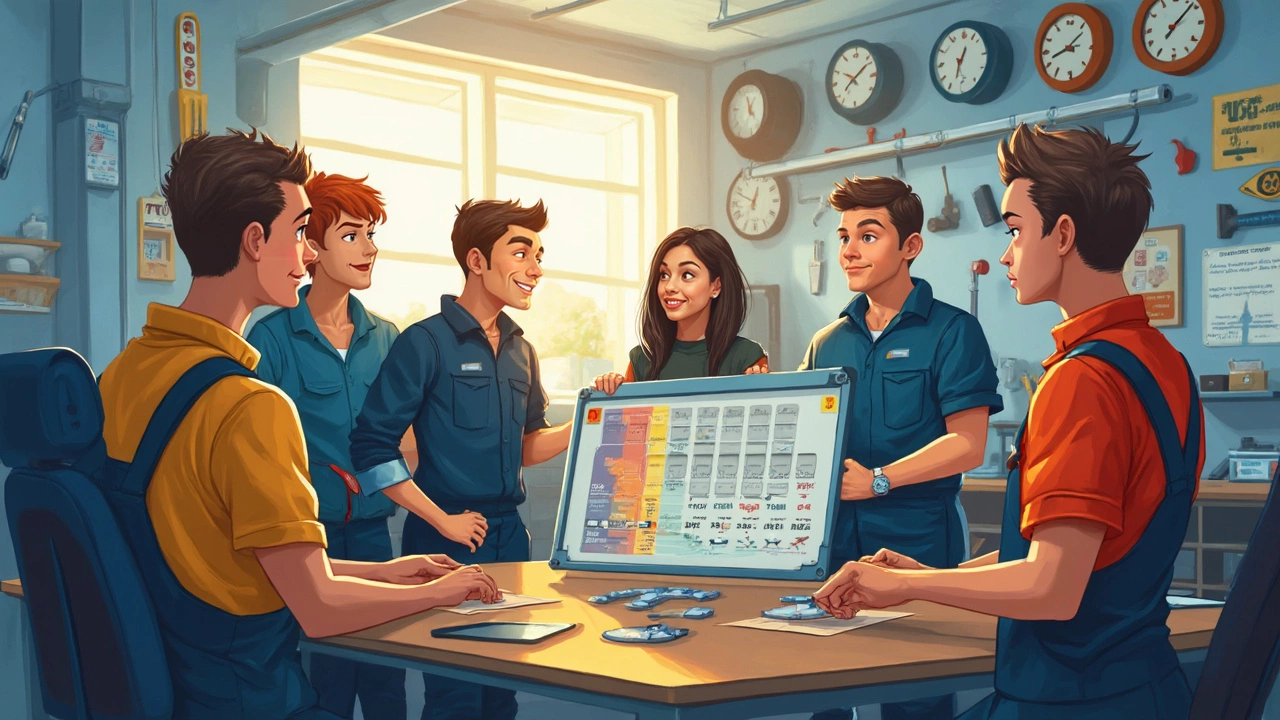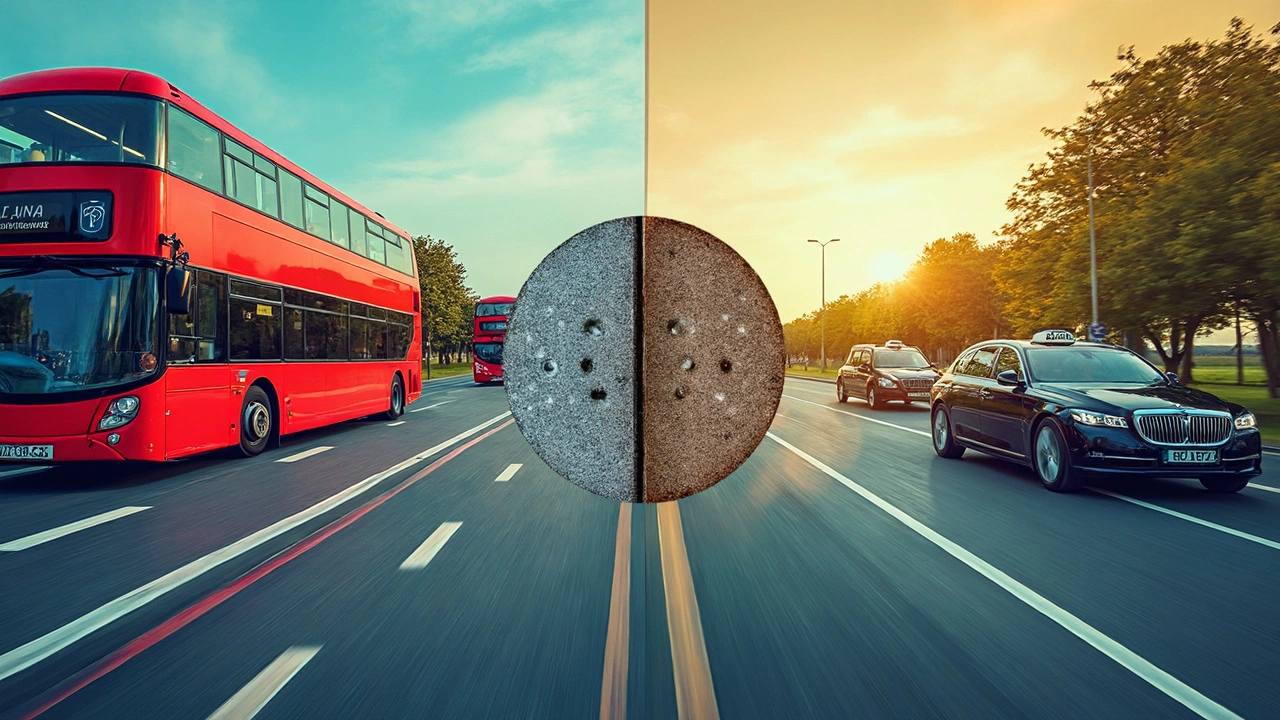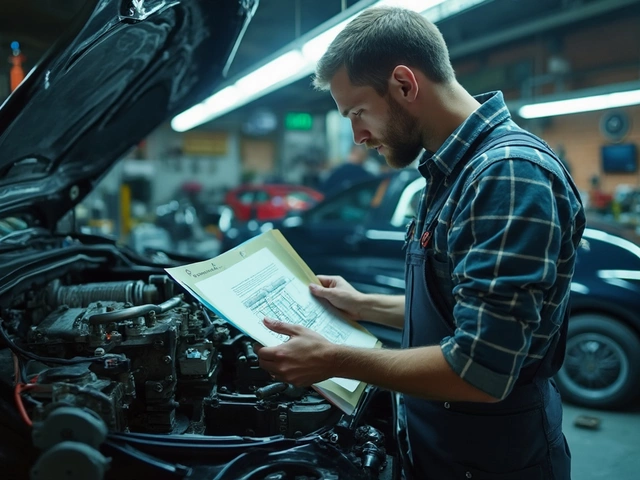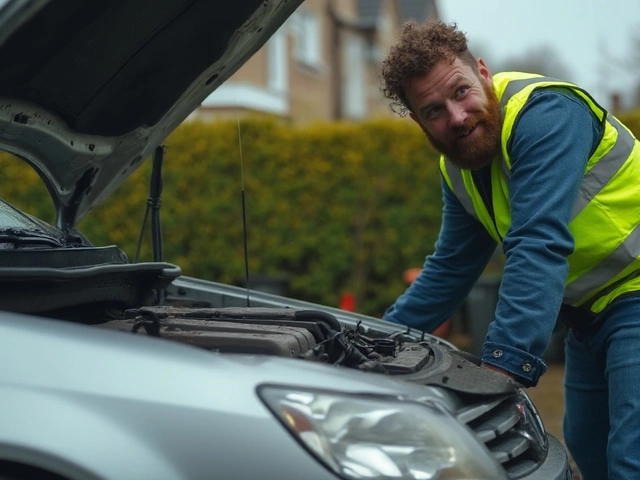Think your brake pads will last forever? Not a chance. Most brake pads last between 30,000 and 70,000 miles, but that’s a huge range. The way you drive and where you spend most of your time behind the wheel matters just as much as the brand of pads you buy.
City drivers burn through brake pads way faster than folks cruising the highway. All that stopping and starting at red lights chews up pads. It’s not just big-city traffic—heavy loads, hilly areas, and even your driving style can shave thousands of miles off your brake life.
- What’s the Typical Lifespan of Brake Pads?
- Why Do Brake Pads Wear Down Faster?
- Easy Ways to Spot Worn Brake Pads
- Tips to Make Brake Pads Last Longer
- When Should You Replace Them—No Matter What?
What’s the Typical Lifespan of Brake Pads?
So, here’s the straight answer: most brake pads stick around for 30,000 to 70,000 miles. That’s a big difference, right? Some people see their pads wear out after just 25,000 miles, while others stretch things to 80,000 miles before hearing a single squeak. What’s the catch? It’s all in how you use your car.
If you mostly drive on wide-open highways where you barely tap the brakes, you’ll get a lot more miles. But if you’re in stop-and-go city traffic—think office commutes or school runs—your brake pad lifespan shrinks fast. Car makers usually list expected mileage in the manual, but real-world numbers almost always depend on you and your driving spots.
| Driving Style | Average Pad Life (Miles) |
|---|---|
| City Stop-and-Go | 25,000 - 40,000 |
| Highway Cruising | 60,000 - 80,000 |
Here’s another kicker: the kind of brake pads you use really matters. Organic pads wear faster than ceramic or metallic ones. Spend a bit more upfront, and your pads might stick around longer, especially if you’re easy on the brakes.
- Organic brake pads: Cheap, but usually last 30,000 - 50,000 miles.
- Ceramic brake pads: Quieter, and often push past 60,000 miles.
- Semi-metallic brake pads: Handle heat better, usually good for 40,000 - 60,000 miles.
Season and weather are wild cards too. Wet or icy roads can put more stress on your brakes. So, while 50,000 miles is the go-to average for most folks, remember it’s not a contest—and it’s definitely not a guarantee. Listening for noise or feeling for sluggish stops matters just as much as watching the odometer.
Why Do Brake Pads Wear Down Faster?
Ever wonder why your brake pads seem to vanish way before you’re ready? It’s not just bad luck. There are several clear reasons why those pads give up the ghost sooner than you might expect.
City driving is rough on brake pads. If you’re stuck in stop-and-go traffic or constantly fighting through red lights, those frequent stops heat up your pads and eat them fast. Compare this to cruising along highways, barely touching your brakes—pads can last way longer out there. According to a 2023 AAA report, brake pads in city cars wear out up to 35% faster than those mostly used on highways.
Your habits matter too. If you tend to slam your brakes or ride them down hills, you’re probably shaving thousands of miles off your brake pad lifespan. Carrying heavy loads or towing trailers adds a ton of strain—so expect much more frequent replacements if you’re hauling stuff for work or fun.
The type of pads you buy plays a big part. Organic brake pads, which come standard on lots of cars, usually wear out way faster than ceramic or semi-metallic versions. Go cheap, get short life. Some brake pads also just don’t work well with certain cars, so picking the right match really matters.
Chris Jones, lead tech at the National Institute for Automotive Service Excellence, says, "Cheap brake pads can save money up front, but often last only half as long as higher quality ceramic options—especially in stop-and-go traffic."
Weather is another factor a lot of people ignore. Wet, muddy roads and winter conditions can grind pads down just by picking up grit. Plus, if you hit long mountain downgrades often, you’re putting more heat and friction on those pads than a flatlander ever will.
| Driving Condition | Typical Brake Pad Life (miles) |
|---|---|
| Mostly highway | 55,000 - 70,000 |
| City stop-and-go | 25,000 - 40,000 |
| Heavy towing | 15,000 - 30,000 |
Bigger wheels, performance cars, or aftermarket setups can also chew through pads in a hurry. Basically, if you’re demanding more power and control, those brake pads are taking the hit.

Easy Ways to Spot Worn Brake Pads
No one wants to mess around with bad brakes. Catching worn-out brake pads early saves you money and keeps you safe. Here’s what to look out for:
- Screeching or Squealing Sounds: If you hear a high-pitched whine when you hit the brakes, that’s usually your pad’s wear indicator telling you it’s time to check them.
- Clicking Noises: Pads that rattle or click might be loose in their holders because they’re too thin.
- Reduced Stopping Power: If your car isn’t stopping like it used to, your brake pads could be too worn down to grab the rotor properly.
- Visual Inspection: You can usually see your brake pads through the wheel spokes. If the pad material looks less than a quarter inch (about 6mm) thick, they’re on their way out.
- Pulsation or Vibration: If you feel a pulse in the brake pedal, that’s a flag something’s wrong. Sometimes it’s the rotors, but worn out pads can cause the same thing.
- Warning Light: Many newer cars have a dashboard warning light for low pads—don’t ignore it.
Here’s a helpful reminder from the folks at Car and Driver:
“If your brakes are making noise or you notice a change in feel, don’t wait. Worn out brake pads can mean longer stopping distances or even damage to the rotors.”
If you want quick data, check out this simple table that shows what to watch for based on pad thickness:
| Pad Thickness | Condition | Action Needed |
|---|---|---|
| > 6mm | Good | Keep driving |
| 3-6mm | Worn | Plan replacement soon |
| < 3mm | Very Worn | Replace now |
Don’t wait until you’re grinding metal or losing stopping power. Keep an eye—and an ear—on your brake pads if you want your car to stop smart every time.
Tips to Make Brake Pads Last Longer
Want your brake pads to stick around longer? It doesn’t have to be rocket science. A bunch of small habits and smart choices can keep you from shelling out for new brake pads every year.
- Slow down and coast: The more you slam the brakes, the faster they wear out. Ease off the gas early and let your car slow itself a bit before using the brakes. This saves a ton of pad life, especially in stop-and-go traffic.
- Lighten your load: Hauling around heavy gear or extra junk in the trunk puts extra strain on your brakes. Drop the dead weight whenever you can—it’s an easy win for pad mileage and gas too.
- Stick to the speed limit: Hard stops from high speed chew up pads fast. Stick to safer speeds and you’ll notice the difference.
- Flush brake fluid on schedule: Fresh brake fluid helps your whole system work better. Old, dirty fluid can make the pads clamp harder than needed.
- Get regular checks: Ask for a brake check whenever you're in for an oil change or tire rotation. Catching uneven wear or stuck calipers early keeps the repair bill low and your brake pads happy.
To put it in perspective, here’s how much of a difference driving style and city vs. highway habits can make on brake pad lifespan:
| Driving Type | Average Brake Pad Life (miles) |
|---|---|
| Mainly city | 25,000 – 35,000 |
| Mainly highway | 60,000 – 70,000 |
| Mixed driving | 40,000 – 50,000 |
One more thing: cheap brake pads might look like a deal, but they can wear down faster and make noise. Go for well-known brands if possible—they usually last longer in the real world.

When Should You Replace Them—No Matter What?
There’s no magic number that tells everyone when to swap out their brake pads. Sometimes you’ve got to ignore the mileage and pay attention to what you see, hear, or feel. Waiting too long is a gamble that can mess up your rotors or even land you in a fender-bender.
Here’s when you should seriously not wait to change your brake pads—even if you’re not at the lowest end of the average brake pad lifespan:
- Squealing or grinding sounds. Don’t brush these off. Squeals usually mean your pads are worn thin. Grinding means metal meets metal, which is bad news for your rotors.
- Brake warning light on your dash. That’s the car’s way of waving a big red flag. Don’t ignore it.
- Pads less than 3mm thick. If you check your pads (you can peek through the wheel spokes), and they look thin—less than about an eighth of an inch—it’s time. Some brands even have a wear bar that makes a nasty noise at this point.
- Strange vibrations when braking. If your brake pedal shakes, your pads might be shot or unevenly worn.
- Car takes longer to stop. If you feel like you have to press harder or it’s taking longer to slow down, don’t risk it.
Want a look at some numbers? Collected by a top auto shop chain in 2024, here’s a quick look at how often drivers end up getting new brake pads based on warning signs—not miles:
| Warning Sign | % of Brake Pad Replacements |
|---|---|
| Squealing/Grinding | 41% |
| Brake Warning Light | 27% |
| Pad Thickness < 3mm | 19% |
| Strange Vibrations | 8% |
| Other | 5% |
So, don’t stress too much about mileage. If you run into any of these issues, it’s time for new pads. And remember: replacing brake pads early is way cheaper than letting them eat through your rotors and risking your safety.


